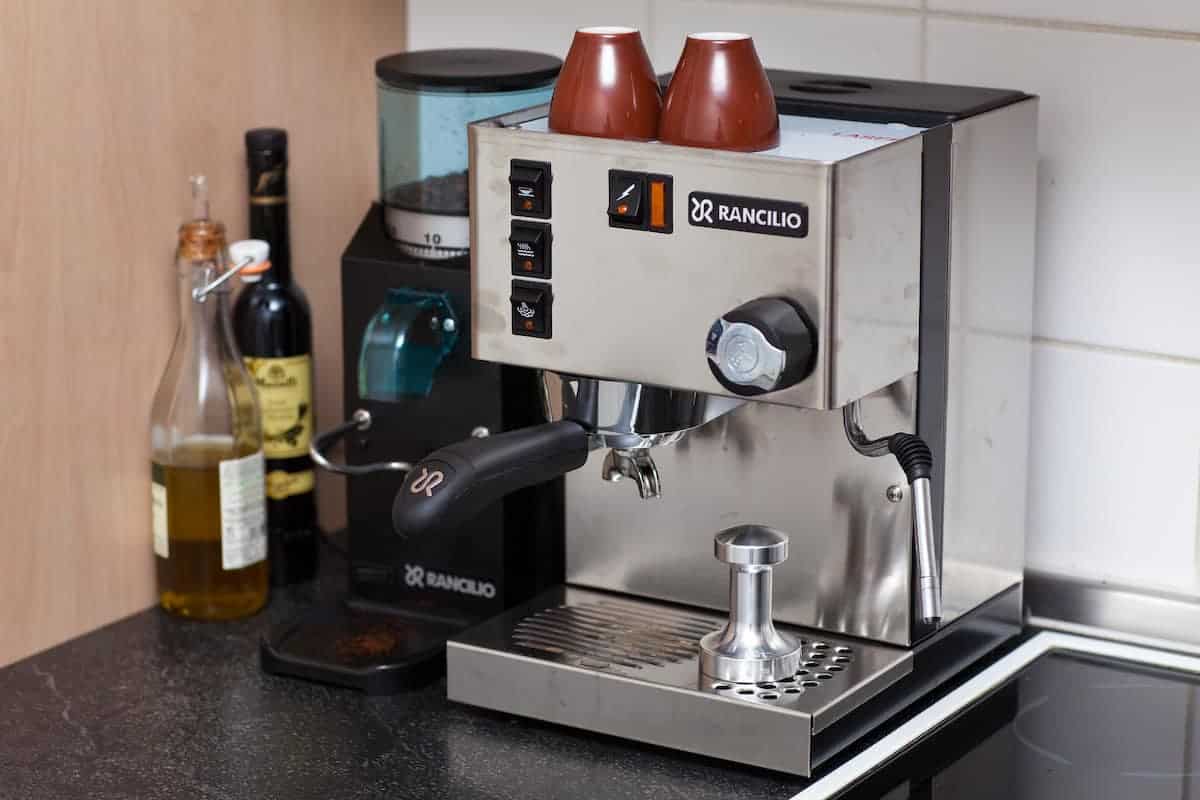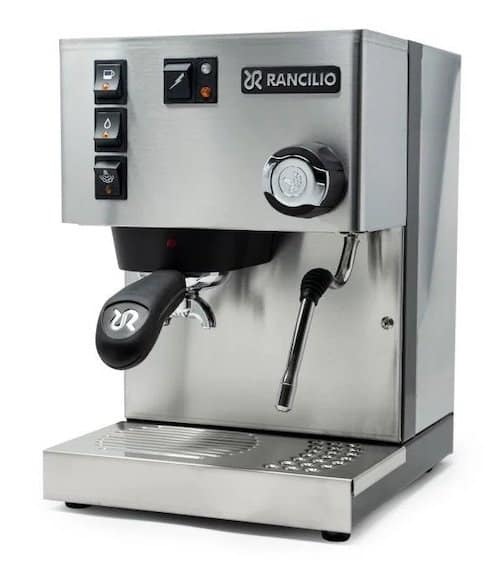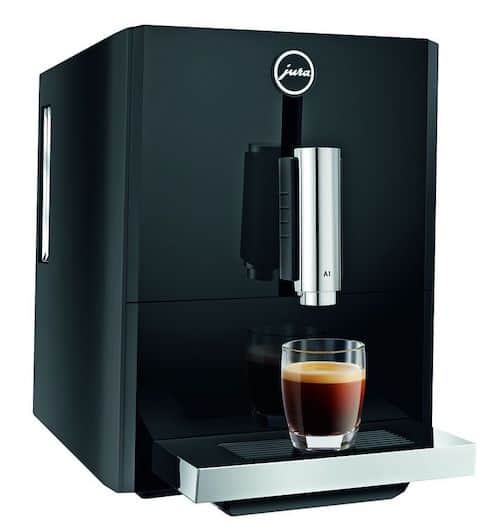Just so you know, as an Amazon Associate we earn from qualifying purchases made via bold red links, buttons or images.
Last Updated on December 4, 2023
Making great espresso at home is now more achievable than ever, and the addition of a quality espresso machine can really cut down on those daily trips to your local cafe. As the cost of speciality coffee continues to skyrocket, making a great latte at home is becoming increasingly popular.

There’s a wide range of home espresso machines out there, and you will need to spend a few bucks to get something that can produce a similar quality to your coffee shop favorites. You can easily spend several thousands of dollars on a high-end coffee machine, but if you’re looking for a slightly more affordable espresso machine, there are plenty of that come in under the $1000 mark.
With all the makes and models of home espresso machines out there, and it can be tough to know where to start your search.
First, you’ll want to identify the type of machine that best suits your needs. There are three main categories of home espresso machine:
- manual
- semi-automatic
- super-automatic
We’ll break down each type of machine and some other features to consider when shopping for your home espresso machine. Then we’ll share our top picks, including the resounding overall favorite, the Rancilio Silvia. We like the Silvia for its elegant design, impressive espresso extraction, and combination of customization and ease of use.
Home Espresso Machine Considerations
A home espresso machine is an investment, so you want to ensure you’re choosing a model that will suit your needs, space and experience level. There are several things you’ll want to consider, including:
- operation style
- boiler system
- size
- grinder options
- special features
- easy access to service and parts
Operation Style
This is probably the most defining feature for you to consider. How much you want to be involved in and control the process, as well as your experience level, will be important factors to consider.
Manual
Manual machines are not for beginners. They put the entire extraction process in the user’s hands. When the extraction time is left entirely up to you, you need some knowledge of the mechanics of extracting espresso. Manual (or lever) machines are for coffee nerds who’ve likely dialled in their home brew game for years with a semi-automatic machine.
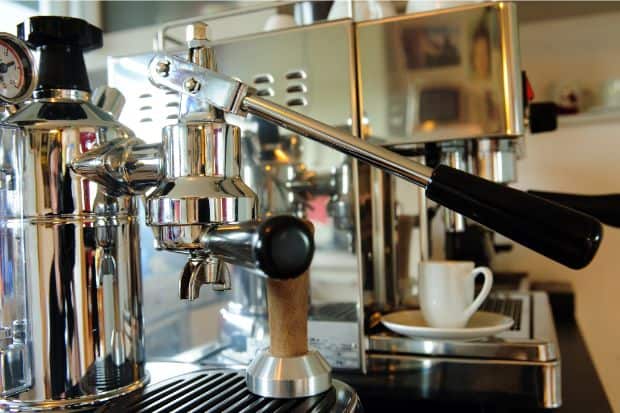
Semi-Automatic
Semi-automatic machines fall somewhere in the middle, and tend to be smaller, less powerful versions of what baristas use in cafes. They offer quite a lot of control and customization at many stages of the process, but still extract espresso at the push of a button—no lever pulling required.
Semi-automatics are the most popular espresso machines for budding home baristas, and those of us who like to steam our own milk and fiddle with espresso extraction. A semi-automatic espresso machine requires a bit of learning, and some trial and error, but they’re both fun to use and have the possibility to produce an exceptional cup of coffee.
Super-Automatic
Super-automatic machines are at the opposite end of the spectrum from lever machines, automating the entire experience. They can still make quite a nice speciality coffee, and they’re getting better all the time.
A super-automatic espresso machine delivers tasty beverages at the push of a button, and requires very little coffee knowledge to operate. If you don’t want to have to worry about the process, and you aren’t overly picky about the product, then a super-automatic machine is probably what you’re after.
Boiler System
Most home espresso machines run on either a single or double boiler system. Single boiler units have, as the name would suggest, one boiler that services both the steam wand and the brew head. This means you can’t perform both actions at the same time, and single boiler units often require a bit of recovery time between steaming and brewing to regulate both water temperature and pressure.
Double boiler units have separate dedicated boilers for espresso extraction and steaming, and tend to offer better heat and pressure regulation. Not all double boiler machines allow you to simultaneously brew and steam, but they typically offer little to no down time between actions.
If you think you’ll be making several back-to-back drinks on the regular, you might want to consider a double boiler machine.
Size
Home espresso machines come in a wide range of sizes, so you’ll want to decide where you want to put yours and then measure your space and plan accordingly. Most of the machines on this list are fairly compact, but keep in mind that some are top-loaded, so you’ll need extra space above the machine to add water and coffee beans.
Grinder Options
Some home espresso machines come with built-in grinders, which streamlines the process and reduces the amount of counter space required for your coffee station.
Super-automatic machines take care of the entire process, with an internal grinder and extraction system.
Manual machines always require a separate grinder, and we highly recommend pairing them with a high-quality burr grinder.
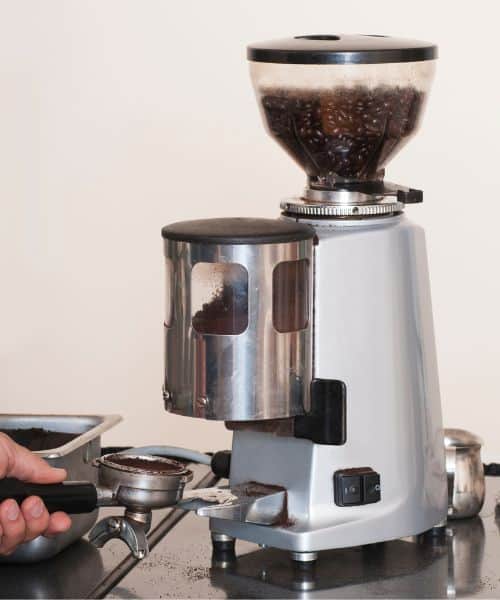
Semi-automatics are where the most variation across models occurs. Some semi-automatics, like our top pick the Rancilio Silvia, come without a built-in grinder. Although this may seem less convenient, it actually allows you to have much more control over your extraction process, since a lot of manipulation is done through adjusting the grind of your coffee beans.
If you do opt for a machine with a built-in grinder, look for one with as many grind settings as possible, which will more closely mimic an external grinder and offer more customization and control.
Special Features
Each home espresso machine comes with its own set of features and specifications. Some machines are self-cleaning, or at least remind you when it’s time to deep clean and descale. Some come with alerts for low levels of water or coffee beans.
Do you want a machine that’s programmable, saving your favorite drink settings? Is a cup warmer a useful addition? Be sure to look at the special features that each machine offers, and think about which you consider key features and which are merely nice-to-haves.
Service and Parts
Before you buy, look into the brand’s service policy and availability of replacement parts. Some have much better reputations for service than others. If you happen to drop your drip tray and bend it out of shape, it’s nice to know that you can send away for another one pretty quickly.
Top 5 Home Espresso Machines Under $1000
Now that you know a bit about what to look for, and hopefully you’re getting an idea of what you need, let’s take a look at our top five picks for home espresso machines under $1000.
Rancilio Silvia: For The Blooming Home Barista
The Rancilio Silvia comes out on top for its impressive performance and quality build. The Silvia performs like a much more expensive machine, and is definitely the best semi-automatic machine in this price range.
What really makes the Silvia stand out is the 58mm portafilter, which is larger than the others on the list and closer to what you’d find on a professional machine. The larger portafilter allows you to use the same ratios a barista would use, for more accurate and refined espresso extraction.
The Rancilio is more capable of a perfect shot than any other machine on the list, and it offers a smooth and effective steam wand that delivers exceptionally textured milk.
The Rancilio Silvia doesn’t have a lot of bells and whistles, but it simply delivers the best quality drinks. It’s sleek, compact, and quite straightforward to operate. Being a semi-automatic machine it will require some knowledge of coffee weight and ratios, and is best suited for someone who wants to play around with their extraction process. Once you get it dialled in though, this is a machine that can really grow with you.
We highly recommend pairing the Silvia with a good quality burr grinder to really optimize your home setup and get the most out of this machine.
Pros
- sleek design
- durable
- compact
- best drink quality
- 58mm portafilter
Cons
- no grinder
- no pressure gauge
- long heat up time of 10-15 minutes
Breville Barista Pro: For The New Home Barista
https://m.media-amazon.com/images/I/41mSNE4xSGL._SL500_.jpg
Check availability
The Breville Barista Pro is another great semi-automatic machine that has quite a few more features than the Silvia, and is slightly more user-friendly. It doesn’t pack quite the same punch for flavor but, as mentioned, nothing in this price range can really compete with the Silvia. It does, however, make an excellent cup of coffee and has some additional features that make it a great choice for the aspiring home barista.
The Barista Pro has a built-in conical burr grinder with a bean hopper that sits on top of the machine. The grinder has 30 adjustable settings, which gives you quite a bit of room to play with grind size, while still giving you a helping hand along the way. This also makes the Barista Pro a bit more budget-conscious since you don’t have to purchase a separate grinder.
The combination of adjustable grind, PID temperature controller and low pressure pre-infusion allow this machine to pull an impressively creamy and well balanced shot of espresso.
The four-hole steam wand creates beautifully textured milk, and this bad boy heats up in a shockingly fast three seconds, unlike the 10 to 15 minutes it takes for the Silvia to reach optimal temperature. This makes the Breville a great option for coffee lovers on the go.
The LCD screen offers real time data while you brew, allowing you to learn about your extraction process, and you can easily make adjustments via the simple control panel.
Being a semi-automatic machine, there is still a bit of a learning curve, particularly if this is your first home machine. The built-in grinder with dose control and the LCD screen make that curve a bit less steep.
The Barista Pro isn’t quite as sleek and compact as the Silvia, but it comes in eight fun colors!
Pros
- customizable
- built-in grinder with 30 settings
- insanely fast heat up of 3 seconds
- LCD touch screen for real time data
- fairly easy to use
- 8 fun colors
Cons
- bit bulkier design
- no pressure gauge
- need to flush water through grouphead to preheat
- no cup warmer
De’Longhi Magnifica: For The Push-Button Barista
https://m.media-amazon.com/images/I/41GJ9BgsA9L._SL500_.jpg
Check availability
If you want a delicious speciality coffee without the fuss of our first two machines, then a super-automatic machine like the De’Longhi Magnifica could be the right fit for you. Super-automatics do all the work for you, and though you do sacrifice a bit on drink quality, the ease and convenience is well worth it for a lot of people.
The Magnifica’s grinder has 13 settings, so it still offers some control and the ability to customize the strength and flavor profile of your espresso.
The panarello steaming wand has the ability to create a variety of textured milk, including microfoam for your lattes, and thick, rich cappuccino foam. The steam wand is manual, which requires you to use a steaming pitcher, but the programmable system does the actual steaming for you. Although this isn’t quite a simple as other super-automatics that pull espresso and then top with milk through the same spigot, it allows for a much more well-integrated beverage, and lets you practice your latte art.
The Magnifica’s steaming system doesn’t pack quite the same pressure as some other models, but it still creates an impressively decent specialty coffee without a lot of guesswork or practice.
This machine is super easy to both use and maintain. The front-loading system means you don’t have to leave a lot of extra room above the machine to refill the water tank, and everything you need to remove for cleaning also pulls out from the front.
The Magnifica is the only machine on our list that has a double boiler system, and although you can’t brew and steam at the same time, there is virtually no down time between actions and you can make several beverages back-to-back. This makes it a great choice for a busy household, or for someone who enjoys throwing dinner parties.
Pros
- double boiler
- easy to use
- manual steam wand with automatic settings allows for the perfect blend of control and ease
- adjustable grind settings
- front loading for easy access
Cons
- grinder is loud and struggles on the finest settings
- less ability to fine tune your process
- not the best steaming pressure
- not the highest quality espresso
- can’t brew and steam at the same time
Jura A1: For The Espresso Lover
Jura is known for quality machines that make great espresso, and the Jura A1 is just that. It’s a compact, sleek, no-nonsense machine that is perfect for someone who loves their espressos or americanos and rarely favors a milk-based beverage. It has a built-in water filter which contributes to the smooth and well-balanced flavor of the classic Jura espresso.
It’s great for small spaces, and since it’s a super-automatic there’s no need for an external grinder. It’s also extremely quiet, with only a bit of noise during the grinding process, which is typical and unavoidable, making it great for shared space and apartment dwellers.
The 37-ounce water reservoir is in the back, so you’ll need a bit of room to maneuver, but since the A1 is small and lightweight, this is an easy task.
There’s a single push button on the front of the machine, for exceptionally simple use, but a hidden touch screen panel offers several options to adjust the brewing process as well as settings for cleaning and descaling. You can program your favorite settings for coffee strength and amount, and adjust them at the touch of a button.
Jura does seem to have its own language of lights and symbols that may take a minute to get used to, but once you’re on the same page it’s smooth sailing.
This is a great machine for someone who simply wants a great-tasting espresso at the touch of a button. Keep in mind you can add a countertop milk frother, which can easily be tucked away between uses, if you or your guests want the option to indulge in a milk-based beverage from time to time.
Pros
- great quality espresso
- compact and sleek design
- simple to use
- quiet
- adjustable and programmable settings
Cons
- less control
- no milk frother
- pours water out while priming
- control panel takes some getting used to
La Pavoni Europiccola: For The Home Pro
https://m.media-amazon.com/images/I/415pek6wulS._SL500_.jpg
Check availability
Manual espresso machines have the potential to pull an incredible shot of espresso, particularly if you use high quality beans, but they are not for the beginner home barista. The entire process is put into the user’s hands, including the actual act of “pulling.” There is a lot of room for experimentation, but also a lot of room for error.
If you’re looking to graduate from your semi-automatic home machine into the hands-on experience of a manual machine, the La Pavoni Europiccola is a great entry point.
Built to last by the iconic La Pavoni, this machine is compact and stylish. The glass window on the reservoir allows you to keep an eye on your water levels. Unfortunately, there’s no pressure gauge to let you know if you’ve reached the recommended minimum nine bars of pressure, so you’ll really need to go by feel. The placement and design of the lever handle assists in a smooth extraction, but that’s about all the help you’re going to get. The rest is up to you.
The Europiccola also features a steam wand, which is a nice addition not always found on lever machines at this price point. Overall, this is a great option for someone looking to try their hand at a manual machine without breaking the bank.
Pros
- approachable manual machine
- built to last
- attractive design
- steam wand
Cons
- no pressure gauge
- not for beginners
Starting your home espresso journey is an exciting time. If this is your first machine, it likely won’t be your last, particularly if you get as obsessed with the process as us coffee nerds do. That’s why we love that there are now a variety of great quality machines at reasonably approachable price points. If you outgrow your machine in a few years, you won’t mind springing for an upgrade.
Opting for something like the Rancilio Silvia is a great option if you want the ability to experiment and grow with your machine, but as you’ve seen, there’s really something for every level of skill and interest.
Thumbnail image: © Matt Biddulph | Creative Commons

